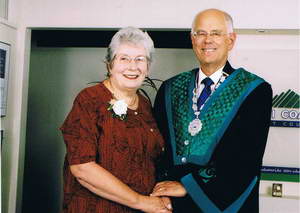– Conrad – 11/9/97
No one would deny that Christchurch, New Zealand, has a problem with smog in the Winter. It’s an asthmatics nightmare and can, at times, exceed the World Health Organisations standards. That the Canterbury Regional Council is serious in its desire to tackle the problem is admirable, but the community is divided over what is the best approach to take. A recent survey canvassing the opinions of Cantabrians on this issue is being collated now.
The Council has decided that the cause of pollution it is going to target is the smoke emitted from open fires and log burners, and are considering introducing a ban on these except for more recently made log burners which are less polluting.
This raises the issue of alternative heating. Wood and coal is readily available, making fires a relatively inexpensive method. Electricity prices have been rising over the last few years at a rate greater than inflation, and the New Zealand Government is considering scrapping the South Island power differential which gives us cheaper power; and is also considering the possibility that we should pay for the Cook Strait cable.
There is also the question of whether we could produce enough to meet the increased demand (the same applies to gas). These things conspire to make electricity an uncertain and potentially expensive alternative at a time when privatisation of the power boards is also an issue.
Other factors in the causes of air pollution would have to be lack of wind, and automotive exhaust fumes. The former we can do little about but the latter we can definitely address. If fires were the main cause of air pollution you wouldn’t expect a warm climated city like Los Angeles to have as much as they obviously do. Los Angeles does have a problem with excess traffic however. Apparently the oxygen booths at cafes there are fast becoming an integral part of their social lives.
There are a few methods to tackling the exhaust fumes which have been tried in other cities and which we could consider here. In Japan they have introduced major restrictions on exhaust emissions which has made a great deal of difference in a city like Tokyo where a face-mask used to be essential outer wear.
In Canterbury (Kent, England) as well as in Saltzberg (Austria), there is an area in the centre of the city that is for pedestrian access only. There are large car parks provided on the outskirts of the city with free public transport available at regular intervals (like every eight minutes) into and out of the centre to encourage the least amount of traffic, and therefore pollution, as possible.
Meanwhile Christchurch moves into Spring and we can breathe easy for another nine months. Maybe the wind generators on the Port Hills will be ready by that time.

